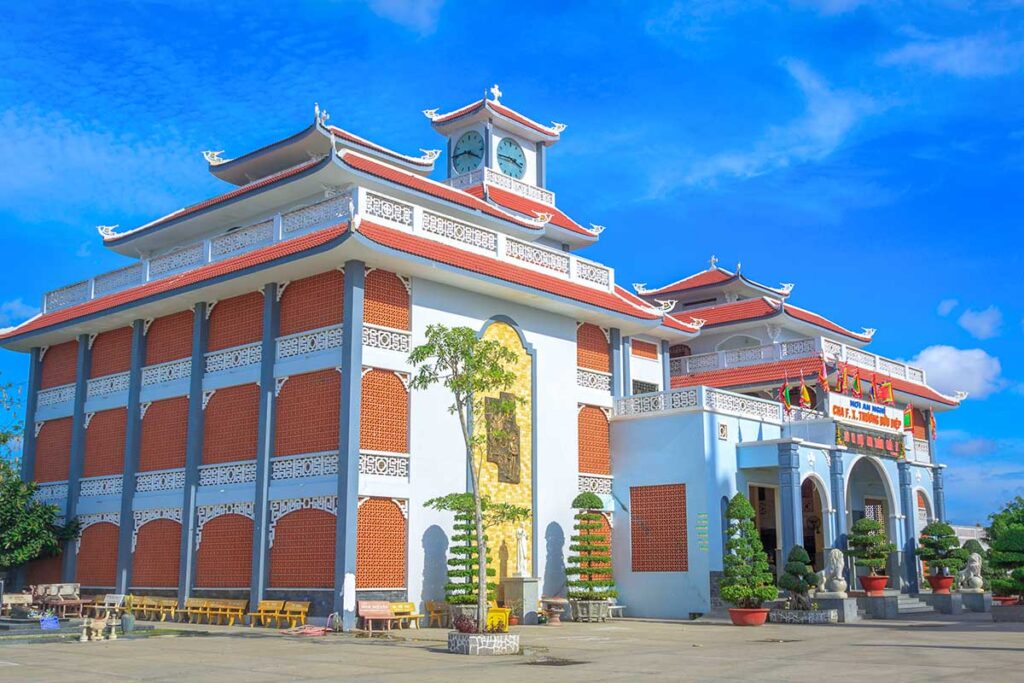What is Tac Say Church?
Tac Say Church, often called Cha Diep Church, is both a Catholic parish and one of the most important pilgrimage sites in southern Vietnam. Thousands of people visit every year, not only local Catholics but also travelers who come to see the resting place of Father Truong Buu Diep, a priest believed by many to perform miracles.
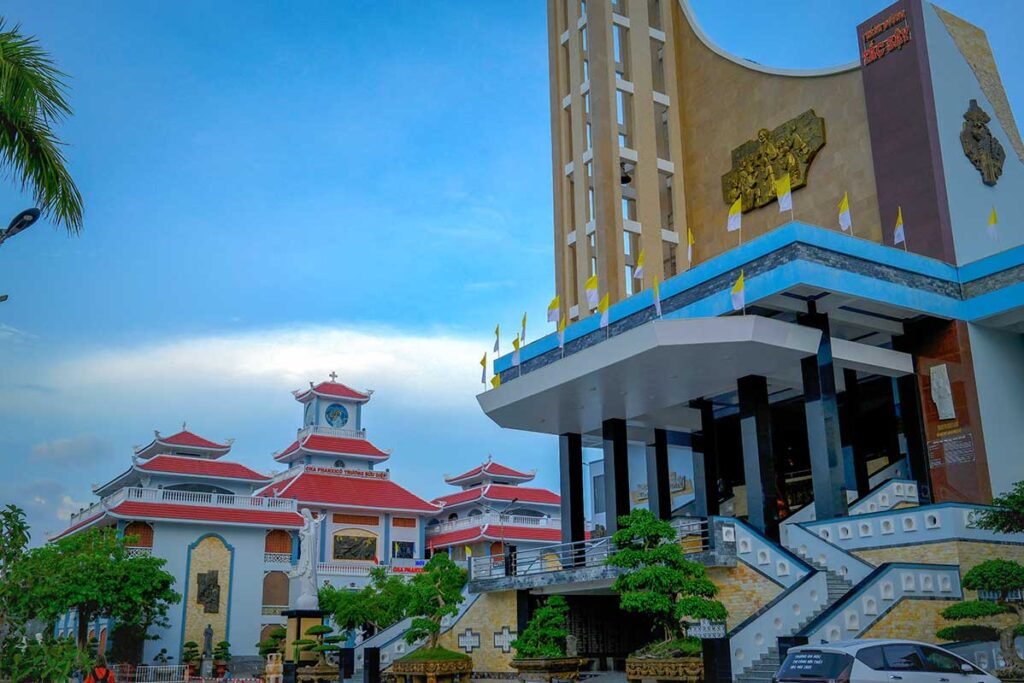
For visitors, the atmosphere is a mix of religious devotion, bustling crowds of pilgrims, and local tourism. Outside the church, you’ll find vendors selling food, drinks, and souvenirs, while inside the grounds the mood shifts to something more solemn, with spaces for prayer and reflection.
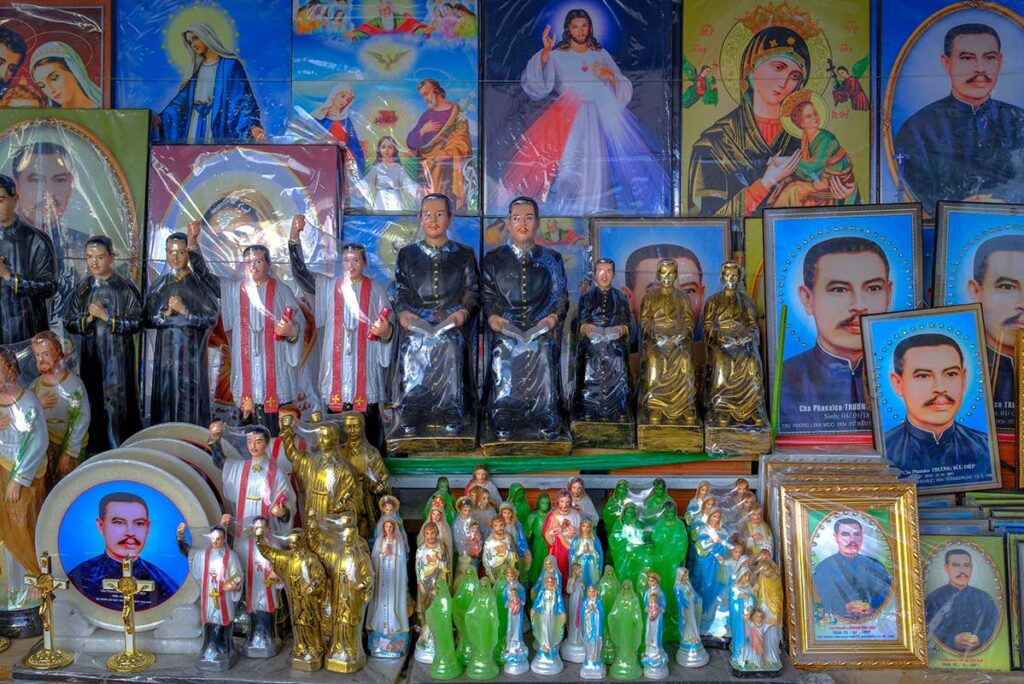
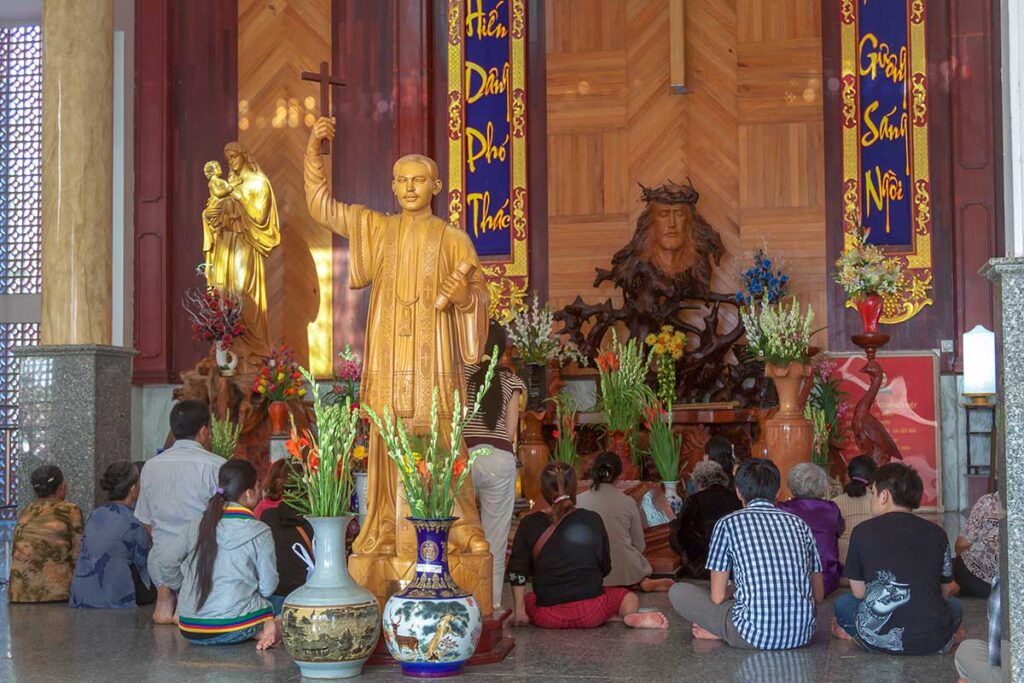
It’s a living religious site rather than just a historical monument, which means the experience can feel powerful for some, while for non-religious travelers it may be more about observing the cultural and spiritual side of the Mekong Delta.
History of Tac Say Church
Early Beginnings
Tac Say Church was founded in the 1920s, during the French colonial period, when Catholic missionary activity spread across the Mekong Delta. The first evangelization here was led by Father Jules Ducquet, a French priest, who helped establish several parishes in Bac Lieu and the wider region. By 1925, a small parish community had formed in Tac Say, and in 1926 Father Paul Tran Minh Kinh became its first parish priest.
Father Diep’s Period (1930–1946)
In 1930, Father Francis Xavier Truong Buu Diep was appointed to Tac Say parish. He played a major role in developing the church, including relocating it to its current roadside location to make it more accessible. Over the years, he not only expanded the parish but also supported the establishment of neighboring communities. His leadership coincided with a period of great unrest during World War II and the First Indochina War, when parishioners faced displacement and danger.
After 1946 and Modern Times
Father Diep was killed in 1946 under circumstances that remain the subject of different accounts, but all agree that he sacrificed his life to protect his parishioners. This act of courage is the foundation of his legacy, and why many consider him a martyr. After his death, Tac Say Church gradually became a pilgrimage destination, with people coming to pray for peace, health, and miracles.
In recent decades, the site has been expanded with the construction of a large mausoleum, a pilgrimage center, and facilities for visitors. These additions turned Tac Say from a local parish into one of the most important Catholic pilgrimage centers in Vietnam, drawing not just religious followers but also curious travelers passing through Bac Lieu.
Who was Father Truong Buu Diep?
Father Francis Xavier Truong Buu Diep was born in 1897 in An Giang Province and ordained as a priest in Phnom Penh, Cambodia, in 1924. Known for his humility and dedication, he worked tirelessly to support poor parishioners, traveling between villages, teaching, and helping establish new communities in the Mekong Delta. In 1930, he became parish priest of Tac Say, where he was remembered as approachable and deeply committed to the people he served.
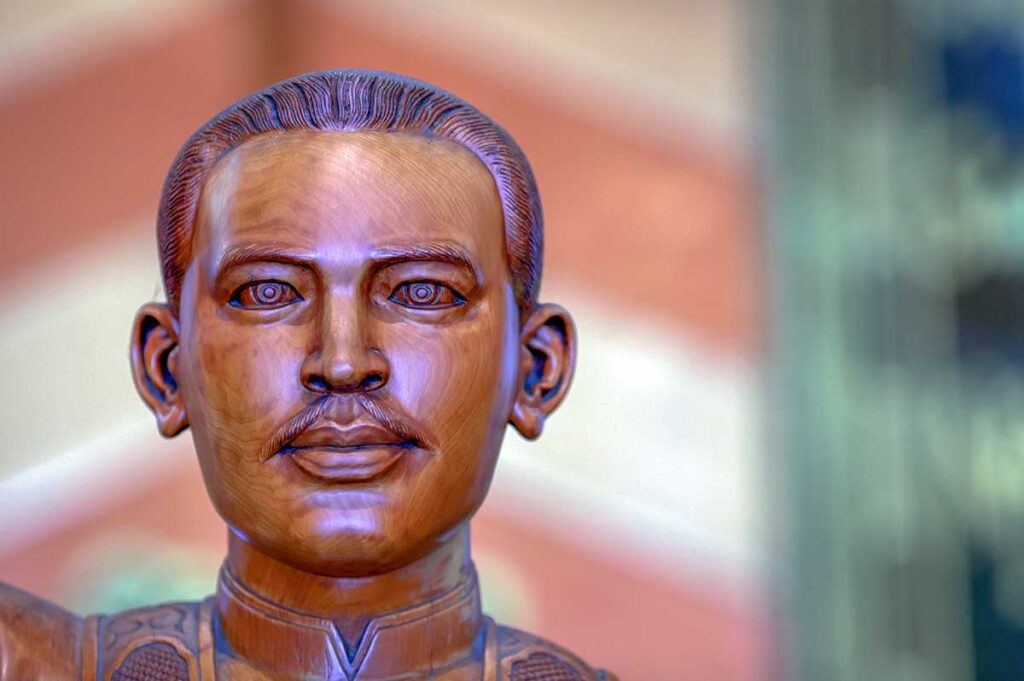
In 1946, he was killed during political unrest after refusing to abandon his parishioners, an act that turned him into a symbol of sacrifice. Today, his legacy lives on through the strong pilgrimage tradition at Tac Say Church, where he is honored as a protector and intercessor by many Catholics across Vietnam.
Architecture of Tac Say Church
Exterior
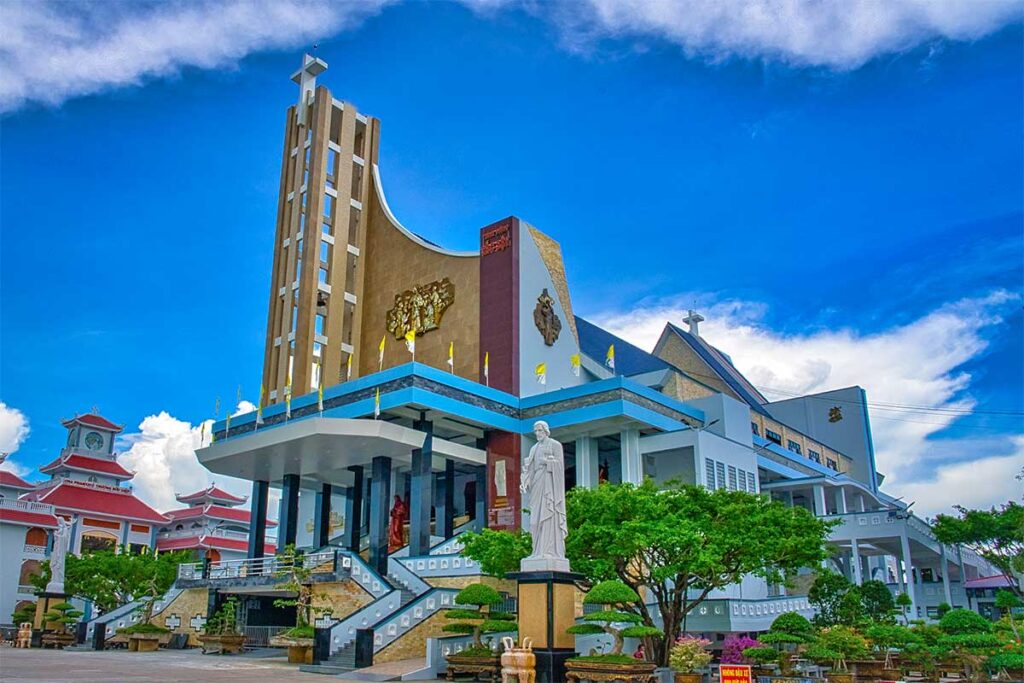
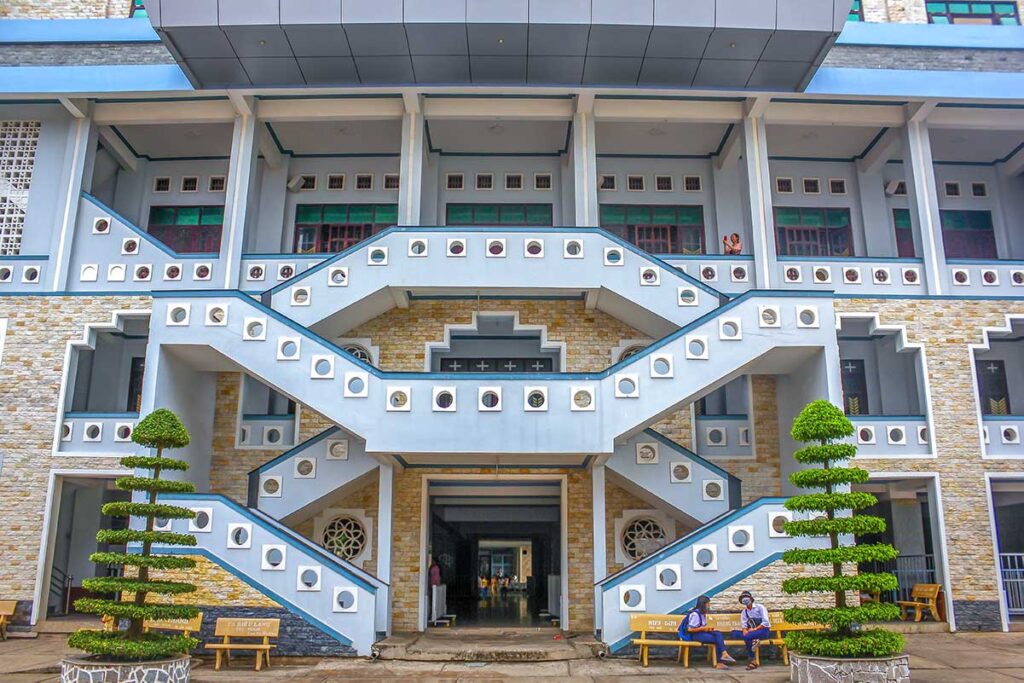
Tac Say Church was originally built with Gothic influences, though over time it has been rebuilt and expanded with more modern touches. The most striking features are its high dome and the white statue of the Virgin Mary placed above the tower, giving the building a more European profile compared to many rural churches in the Mekong Delta. While it’s not as grand as cathedrals in Hanoi or Ho Chi Minh City, it stands out in Bac Lieu Province, where Buddhist temples are more common.
Interior
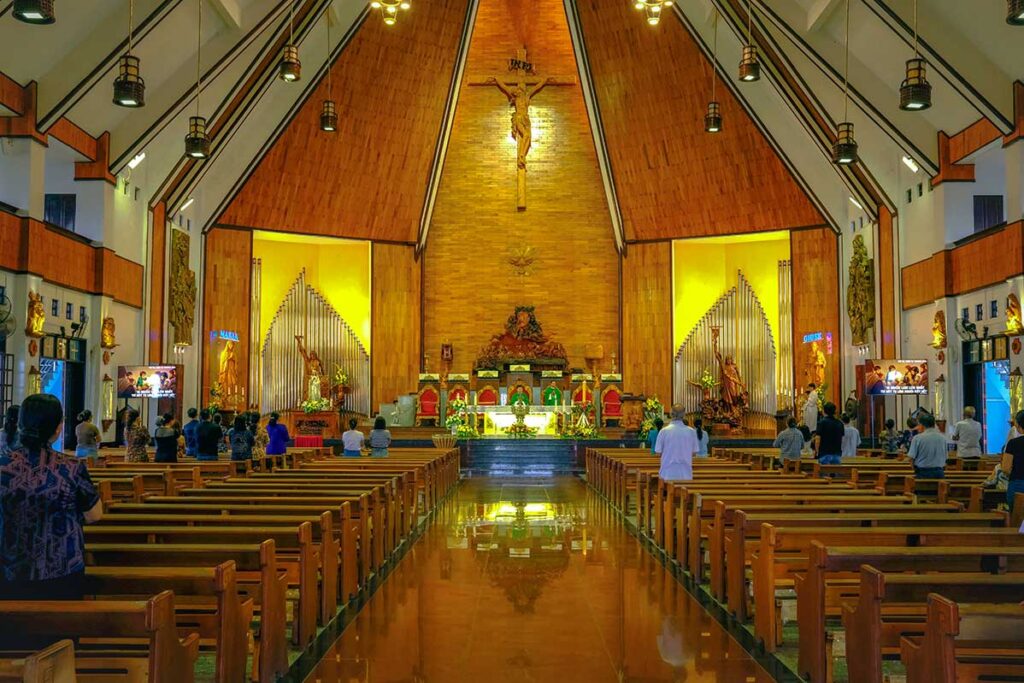
Inside, the nave is large and airy, with enough space to hold big Mass gatherings and pilgrimages. Two pipe organs flank the main altar, and the sanctuary is decorated with detailed wood carvings made from precious timber, giving the space a solemn and traditional feel. The design is practical rather than extravagant, reflecting the church’s active role as a place of worship rather than a showpiece for visitors.
Father Diep’s Tomb & Pilgrimage Center
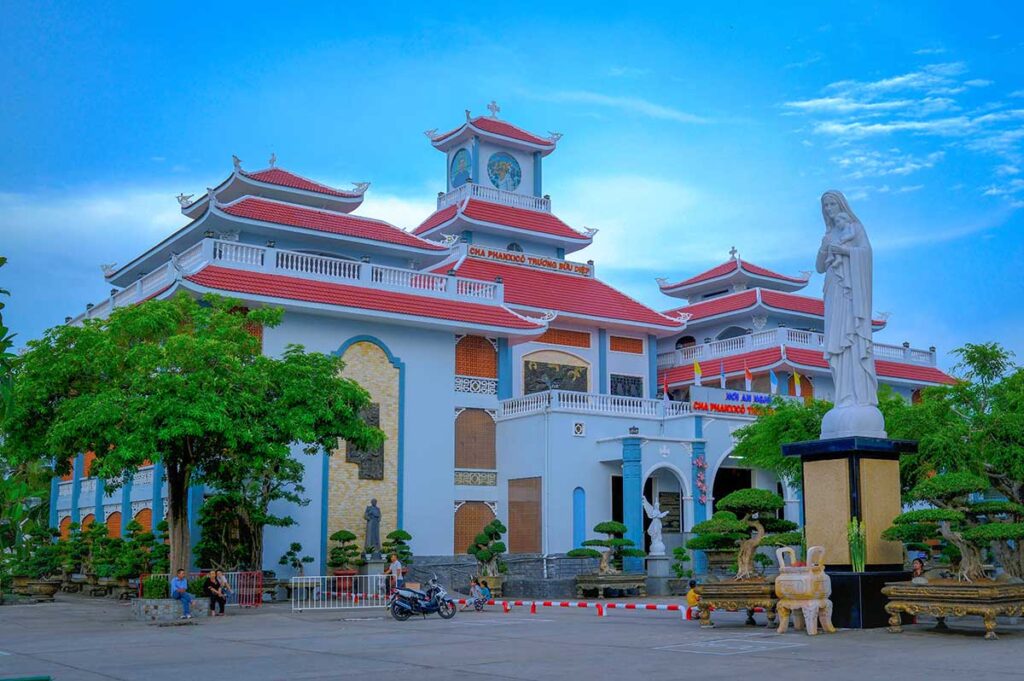
Behind the church is Father Diep’s mausoleum, designed with three layered roofs that resemble a traditional Vietnamese temple more than a Catholic structure. This mix of styles highlights the blending of local culture with Catholic devotion.
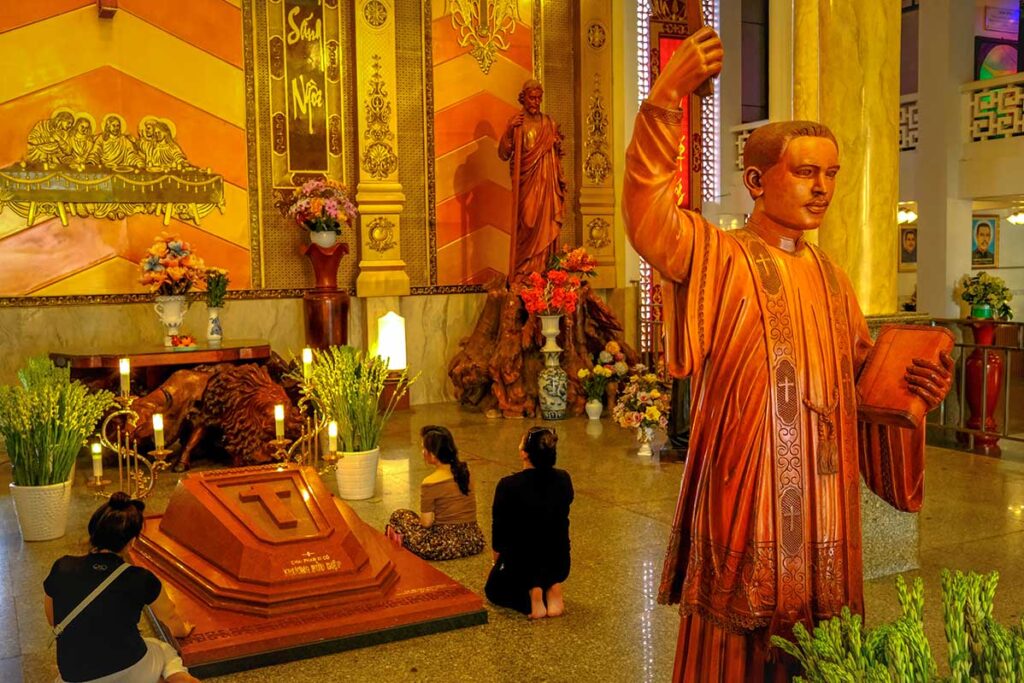
Next to it is the Pilgrimage Center, which holds documents and displays about Father Diep’s life, as well as souvenir stalls and simple accommodation for pilgrims. For many visitors, this part of the complex feels more significant than the church itself, as it is where prayers, offerings, and gatherings take place.
Practical visiting information
Location & How to get there
Tac Say Church is located on National Highway 1A in Gia Rai District, about 37 km from Bac Lieu city. From Ho Chi Minh City, the journey is roughly 280 km (5–6 hours by car or sleeper bus). Buses on the HCMC–Ca Mau route often stop at the church, making it accessible even without a private vehicle. From Can Tho or Soc Trang, you can reach it in 2–3 hours, while from Ca Mau it’s just under an hour’s drive.
Opening hours & Entrance fee
The church grounds are open daily from 4:00 to 21:00. Entry is free.
Mass times
Mass is held three times on weekdays at 5:00 am, 9:00 am, and 5:00 pm. On Sundays, there is an additional service at 7:00 am.
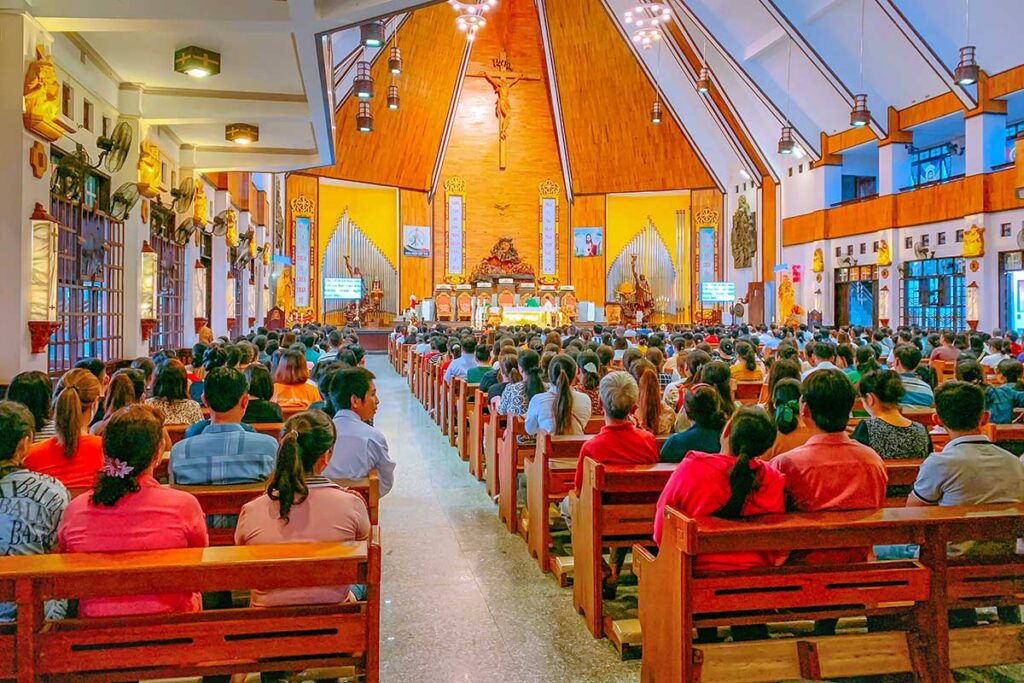
Dress code & Etiquette
Visitors are welcome, but modest clothing is expected if you plan to enter the church or attend Mass. During the annual feast days in March, the atmosphere is very crowded and devotional, so patience and respect are especially important.
Facilities
There is parking on site for both motorbikes and cars, though it fills quickly during big events. Restrooms and shaded rest areas are available for pilgrims. Outside the gates, you’ll find food stalls, small cafés, and souvenir vendors—convenient but sometimes a bit busy and commercial.
Best time to visit
You can visit year-round, but the dry season from November to April is the most comfortable for travel in Bac Lieu. The biggest event is the annual pilgrimage on March 11–12, marking Father Diep’s death anniversary, when thousands of devotees arrive. This creates an intense atmosphere but also heavy crowds, so whether you see it as the best or the most difficult time to visit depends on what you’re looking for.
Nearby attractions to combine
If you’re already in the area, it makes sense to combine Tac Say Church with other nearby sights. In Bac Lieu city, highlights include the Prince’s House, the wind farm, and the Bird Sanctuary. The colorful Khmer pagodas of Xiem Can and Ghositaram are also within reach. If you’re traveling further south, you can continue to Ca Mau to visit Cape Ca Mau or U Minh Ha National Park.
Is Tac Say Church worth visiting?
For Catholics, Tac Say Church is one of the most important pilgrimage sites in Vietnam. Visiting Father Truong Buu Diep’s tomb is a deeply meaningful act of faith, and the site’s reputation for miracles and answered prayers makes it a powerful destination for believers.
For non-religious travelers, the appeal is different. The church itself is relatively modest compared to iconic cathedrals in Hanoi or Ho Chi Minh City, so if you’re expecting grand colonial architecture, it may feel underwhelming. What makes it interesting is the story of Father Diep’s sacrifice and the atmosphere of pilgrimage, which gives insight into a side of southern Vietnam’s culture you don’t see everywhere.
Overall, Tac Say Church is worth a stop if you are already exploring Bac Lieu or on the way to Ca Mau. It’s not a must-see on its own, but paired with other regional highlights—like Bac Lieu’s bird sanctuary, Khmer pagodas, or Cape Ca Mau—it adds an authentic cultural layer to your trip.
